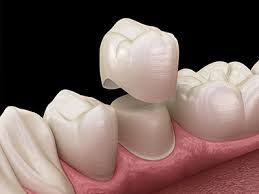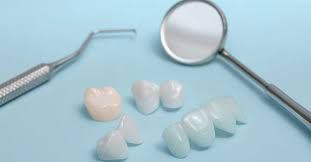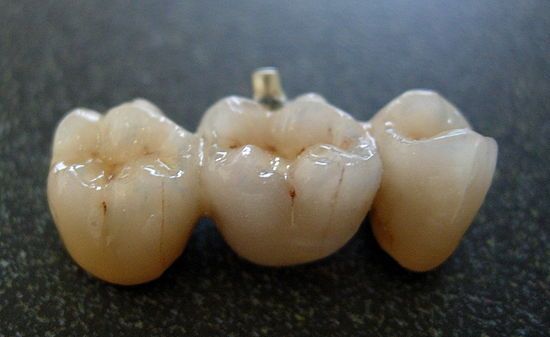An inorganic compound with non-metallic properties consisting of oxygen and one or more metallic or semimetallic elements, e.g. Al, ca, mg, s,zirconium and so on.
They can appear as either crystalline or amorphous solids, being called glasses.
These material produce superior aesthetic results compared to other types of restorations
Difference between Household Porcelain and Dental Porcelain
House hold porcelain differs from dental porcelain by the presence of kaolin (Hydrated Aluminum Silicate), it increases the ability to mold the unfired porcelain but it gives an opaque color, making kaolin usage to be insignificant.
Little history as regards Dental Porcelain
The term ceramic is driven from the Greek word
“Keramos”.
Charles Land (1886):
Introduced the first successful fused feldspathic
porcelain inlay and crowns to dentistry.
He described a technique of a platinum foil as
a substructure for ceramic crown.
These crowns exhibited excellent aesthetics with
high incidence of failure (low flexural strength).
McLean and Hughes (1965):
Developed a Porcelain Jacket Crown (PJC) with an inner core of aluminous porcelain containing 40-50% alumina crystals to block the propagation of cracks.
The inner core is layered with conventional porcelain ,but the structure was sufficient only for restoration of anterior teeth.
PJC improved the strength of porcelain, and brought back the interest in all-ceramic restorations.
Sadoun (1988):
Introduced In-Ceram material by slip-casting
technique in which he achieved 85% alumina
crystalline content; while McLean and Hughes had
achieved only 40-50% in former aluminous
porcelain.
This technique made In-Ceram stronger than other is other
ceramic materials available at that period.
CLASSIFICATION OF DENTAL CERAMIC
Ceramics can be divided
According to:
1- Microstructure
2- Processing Technique
Microstructural classification:
At a microstructural level, ceramics can be divided using their composition of glass/crystalline proportions and qualities.
Ceramics can be further classified into four basic compositional categories with a little based mixture subgroups:
Category 1: Glass-based systems, mainly silica
Category 2: Glass-based systems,
noted for silica with fillers which appears crystalline in nature in most cases it can leucite or a different high-fusing glass ceramics.
Category 3: Crystalline-based systems
with glass fillers (mainly alumina)
Category 4: Polycrystalline solids
(alumina and zirconia)
2- Processing technique classification:
Generally it can be included in three groups:
- Powder/Liquid
- Pressable
- CAD/CAM
Video from Aspire32 YouTuber



